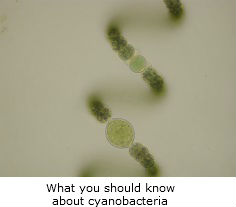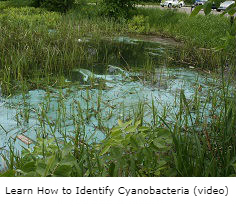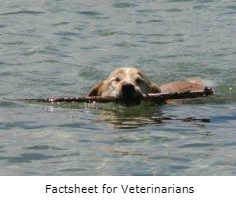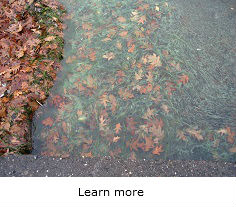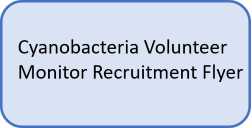 Cyanobacteria (also known as blue-green algae) are common native organisms in lakes, ponds and rivers around the world. In Vermont, they can be found in any water body, river or stream. Some species of cyanobacteria produce toxins and these toxins have been documented in some Vermont lakes. Cyanobacteria are not always toxic and it is not possible to tell by looking if toxins are present. For this reason, the Vermont Department of Health and the Vermont DEC recommend that everyone avoid contact with cyanobacteria.
Cyanobacteria (also known as blue-green algae) are common native organisms in lakes, ponds and rivers around the world. In Vermont, they can be found in any water body, river or stream. Some species of cyanobacteria produce toxins and these toxins have been documented in some Vermont lakes. Cyanobacteria are not always toxic and it is not possible to tell by looking if toxins are present. For this reason, the Vermont Department of Health and the Vermont DEC recommend that everyone avoid contact with cyanobacteria.
We can all safely swim, fish and boat in Vermont’s lakes and ponds if we learn to recognize cyanobacteria. The information here will help you know when it is best to find another place for your family and pets to enjoy the water.
Play it safe! Learn to recognize and avoid cyanobacteria.
To Report A Cyanobacteria (blue-green algae) Bloom*:
Use the Department of Health’s online form to report a bloom. Please include several photos – one or two close up and one or two farther away – and be able to identify the location on a map or provide detailed information about its’ location.
*Blooms are dense concentrations of cyanobacteria. They often occur at the water surface and can cover large areas. See the cyanobacteria conditions for examples.
Vermont uses 3 levels to describe cyanobacteria conditions:
- Generally Safe - Few if any cyanobacteria present. The area should be safe for recreation. (See photos)
- Low Alert - Small amounts of cyanobacteria present. The area is open for recreation, but caution is advised in any area where dense accumulations or scums are seen. (See photos)
- High Alert - Large amounts of cyanobacteria are present and scums may occur in some areas. The water is not safe for recreation. (See photos)
Become a Cyanobacteria Monitor
Help us monitor for cyanobacteria blooms this summer by becoming a trained monitor! The official cyanobacteria monitoring season will begin on June 26. Monitors will receive a training from DEC staff on how to recognize and report blooms, and commit to monitoring a location on a lake every week for 12 weeks or more on the same day of the week. Volunteers can choose their location, but public access sites (swimming areas, boat ramps) are strongly encouraged. Volunteers on Lake Champlain should register for a training with our partner organization, the Lake Champlain Committee, who coordinates volunteers there (Cyanobacteria Monitoring Interest Form - Lake Champlain Committee). If you want to become a monitor on another VT lake, please email Peter Isles (peter.isles@vermont.gov) with ALL of the following information:
- Preferred training date
current scheduled dates for 2024 are:
May 16, 4:00-5:30 PM
May 23, 12:00-1:30 PM
May 28, 4:00-5:30 PM
June 5, 12:00-1:30 PM
June 15, 4:00-5:30 PM
June 27, 4:00-5:30 PM
If none of these dates work, please indicate general availability (e.g. days of week, times of day)
- Your Name (first and last)
- Phone number
- Email address
- Waterbody and town
- Specific site that you want to monitor (e.g. boat launch on Joe’s Pond), or assigned site number for returning volunteers who have this information
- Latitude and Longitude of the site (it is easy to drop a pin on google maps to see lat/long)
- Whether you have been a volunteer cyanobacteria monitor before.
What you can do
There are a number of things that volunteers can do to help the state track blooms, to help to collect data on the factors that contribute to blooms, and to directly improve water quality in lakes where they live.
- Report blooms! The Vermont Department of Health maintains a Cyanobacteria Tracker website, where you can report blooms and where you can see other recent reports of blooms around the state.
- Become a volunteer cyanobacteria monitor! Beyond just reporting blooms you happen to see, you can sign up to become a regular volunteer cyanobacteria monitor. Our volunteer monitors take visual observations of lake conditions every week, whether or not there is a bloom. These observations help us to better understand how common blooms are in different locations, and to better compare bloom severity across years.
- Become a lay monitor! Volunteer lay monitors collect measurements and samples of a wide variety of lake variables during the summer, such as nutrients, temperature, water transparency, and more. These data help us to track trends in the underlying variables which make blooms more likely, and help us to manage lakes to reduce the chances of future blooms.
- Take action! The Lake Wise program at DEC gives guidance to lakeshore property owners on how to reduce their impacts on lake water quality. If you aren’t a lakeshore property owner, you can still contribute by helping to manage stormwater runoff from your property (see info here), because most water that falls into Vermont eventually makes its way into our lakes or rivers!
- Get involved! There are a number of actions that can be taken in your local municipality to improve water quality and ultimately help reduce cyanobacteria blooms in the future. A few examples of that are here—get involved in your community and help to protect our lakes!

